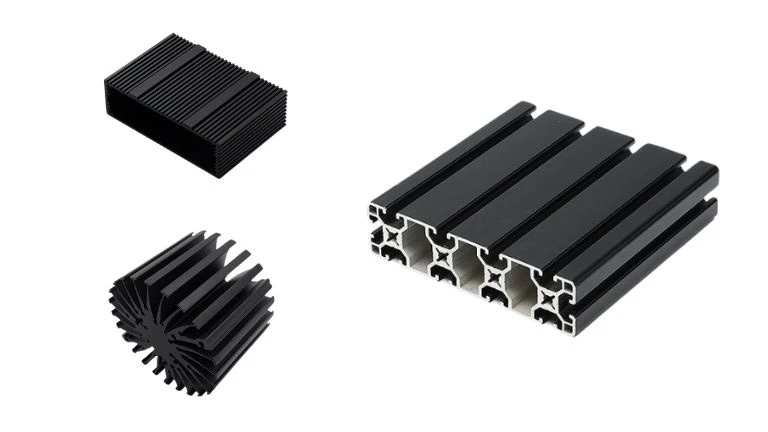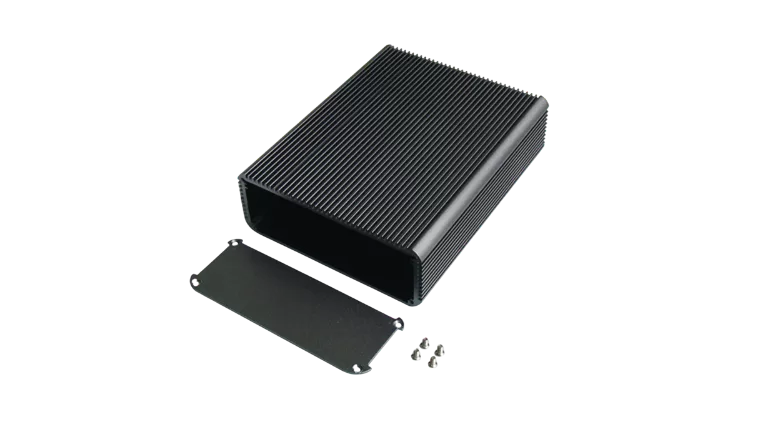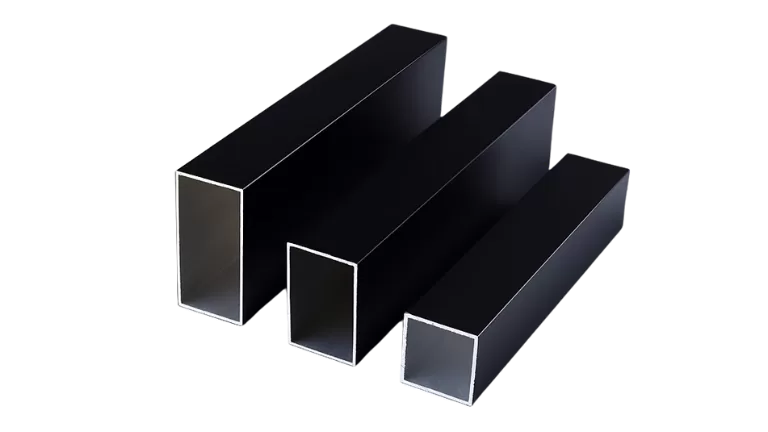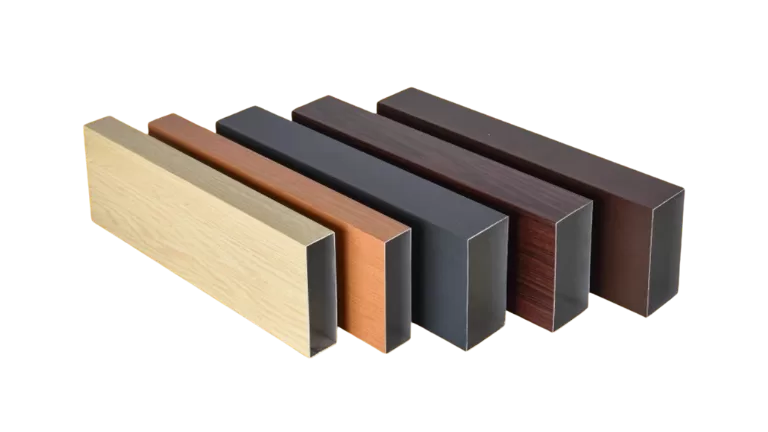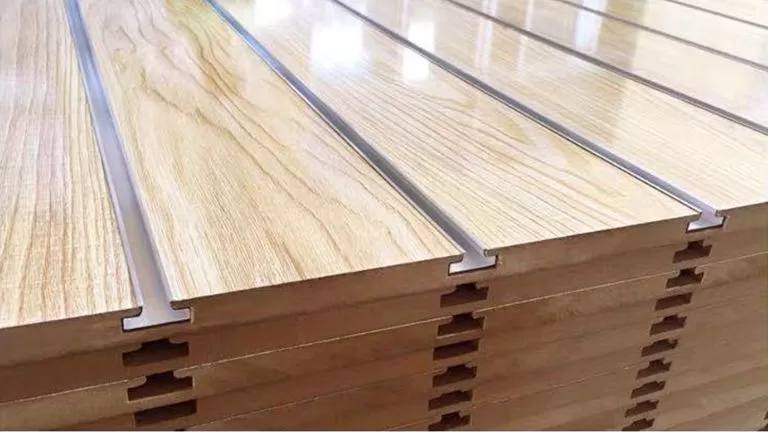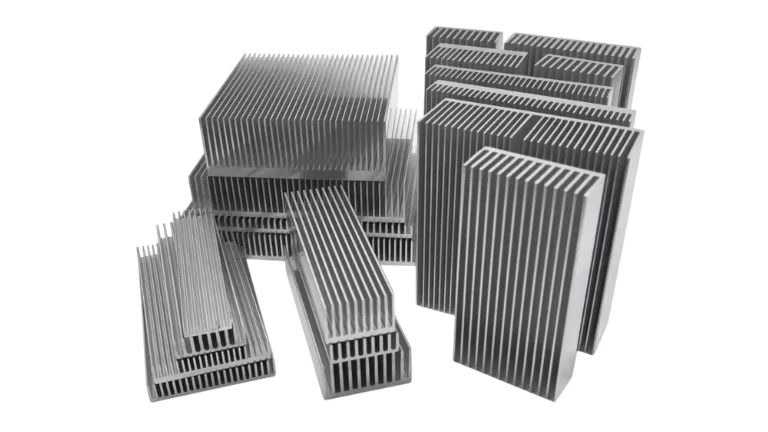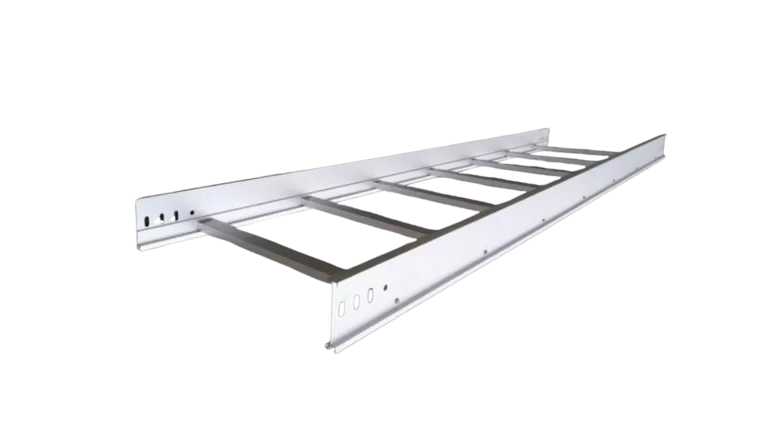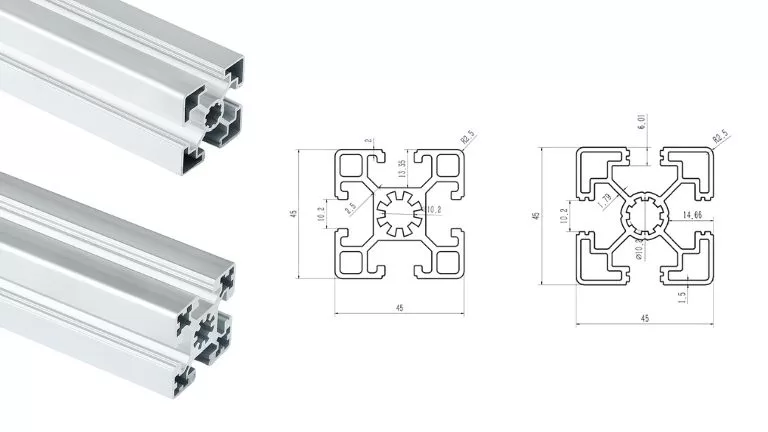Custom Black Aluminum Cable Railing Extrusion

We specialize in custom aluminum extrusions and provide high-quality black aluminum cable railings, including complete mold development and fabrication services to meet your unique project needs.
- High Capacity: Equipped with 40 advanced aluminum extrusion lines for efficient, high-volume production.
- Mold Expertise: In-house mold design and development ensures fast and precise customization.
- Surface Finishing: Complete surface treatment options, including powder coating and anodizing.
- Precision Machining: Precision machining capabilities for cutting, drilling, CNC fabrication, and more.
Black Aluminum Cable Railing
Black aluminum cable railing is a modern system mainly composed of a black aluminum frame and stainless steel cables. This design provides safety and support while maintaining an open, unobstructed view. The excellent corrosion resistance and durability of aluminum make it ideal for both indoor and outdoor use, such as balconies, stairs, and decks. The sleek black finish adds a contemporary touch, making black aluminum cable railing a popular choice for residential and commercial spaces seeking both style and long-lasting performance.


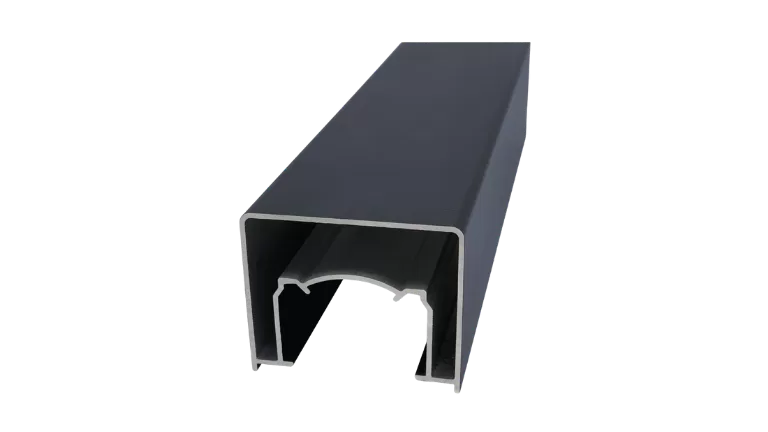
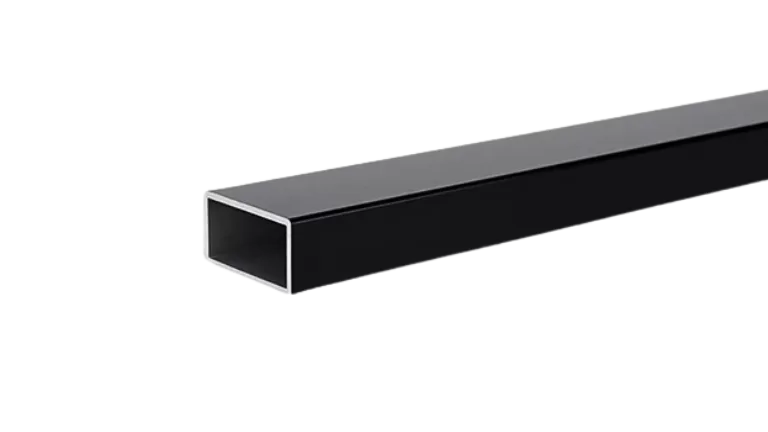
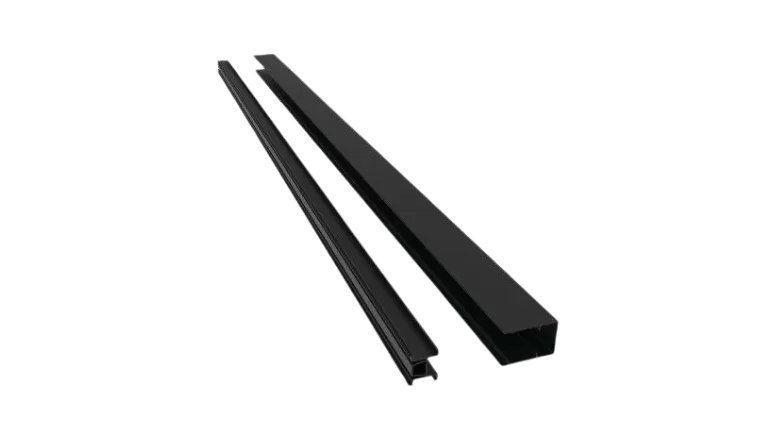
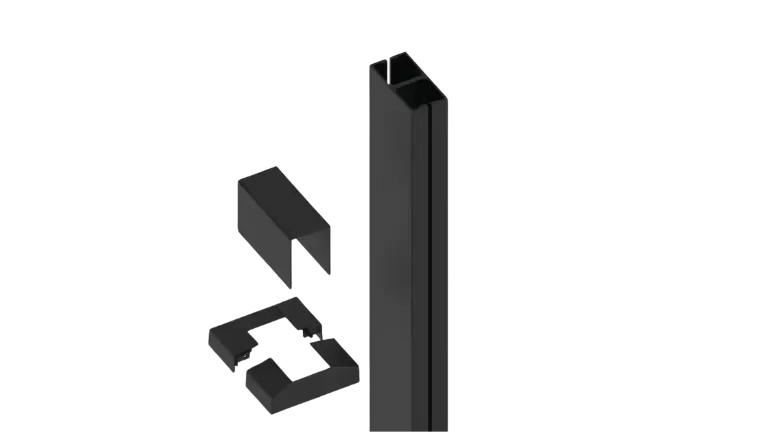

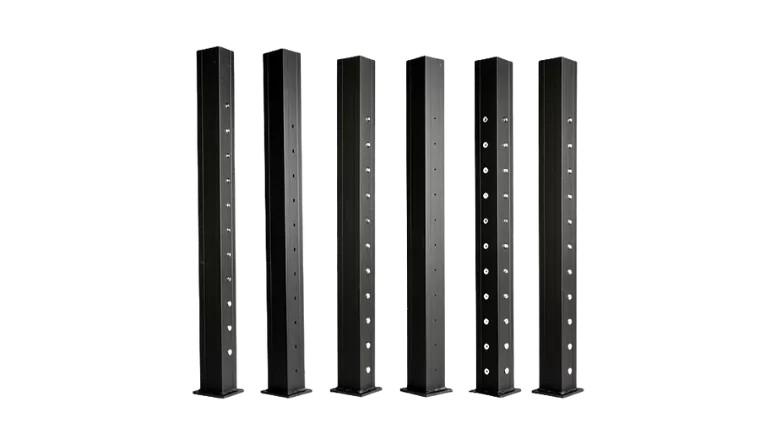
Common Applications
Black Aluminum Cable Railing is a versatile solution that seamlessly blends safety, durability, and modern style. Its unique design makes it suitable for a wide range of applications in both residential and commercial settings. Common uses include:
1. Decks and Patios: Provides safety and an open view for outdoor relaxation and entertainment areas.
2. Balconies: Enhances modern aesthetics while offering secure protection on residential or commercial balconies.
3. Staircases: Used for both interior and exterior stairs, combining safety with a contemporary look.
4. Terraces and Rooftop Gardens: Maintains visibility and style in elevated outdoor spaces.
5. Walkways and Corridors: Adds a stylish safety barrier along pathways in public or private buildings.
6. Commercial Spaces: Suitable for offices, hotels, restaurants, and other commercial environments needing durable and attractive railings.

Features of Black Aluminum Cable Railing
Modern Appearance
The sleek black aluminum frame paired with stainless steel cables creates a stylish, contemporary look suitable for various settings.
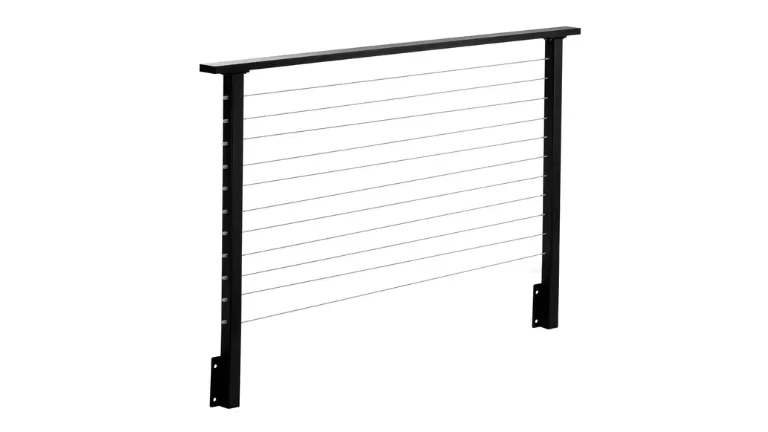
Unobstructed Views
Cable design minimizes visual barriers, allowing for open, clear views that enhance both indoor and outdoor spaces.
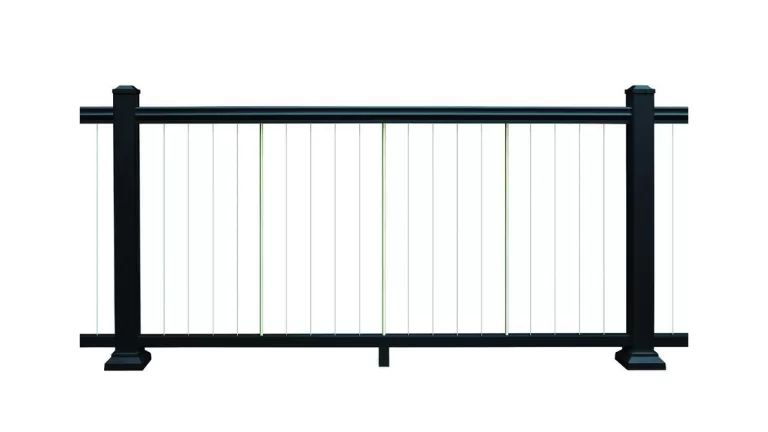
Durable and Corrosion-Resistan
Aluminum construction offers excellent durability and strong resistance to rust and corrosion, even in challenging environments.

Safe and Sturdy
The railing system provides reliable support and safety, with tightly tensioned cables and a solid aluminum framework.
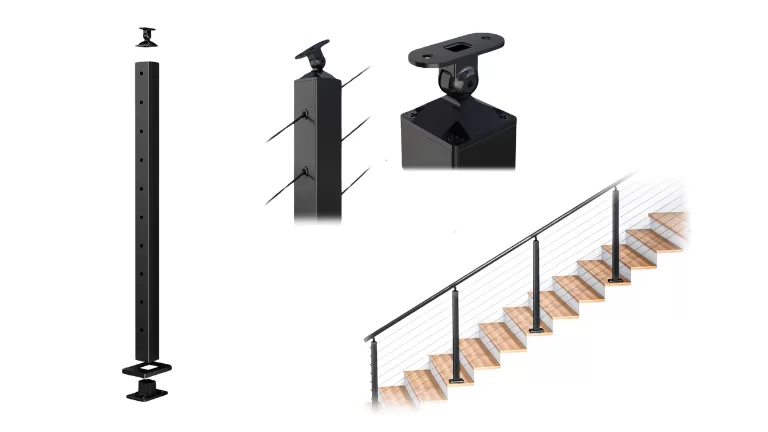
Low Maintenance
Both aluminum and stainless steel materials require minimal upkeep and are easy to clean, maintaining appearance over time.
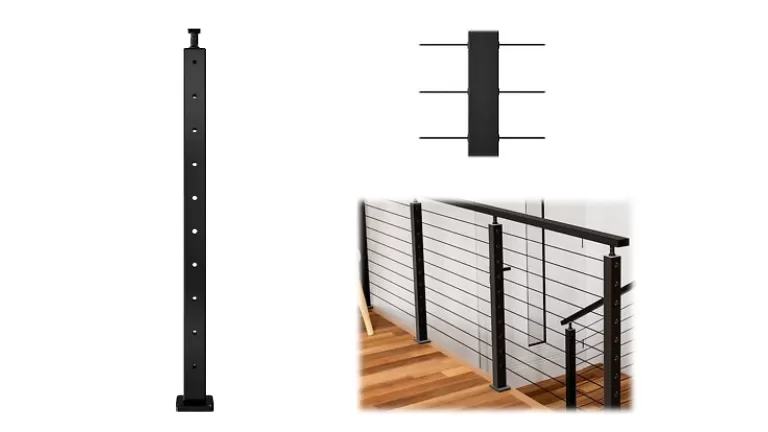
Versatile Installation
The modular system is adaptable for decks, balconies, stairs, and more in both residential and commercial applications.
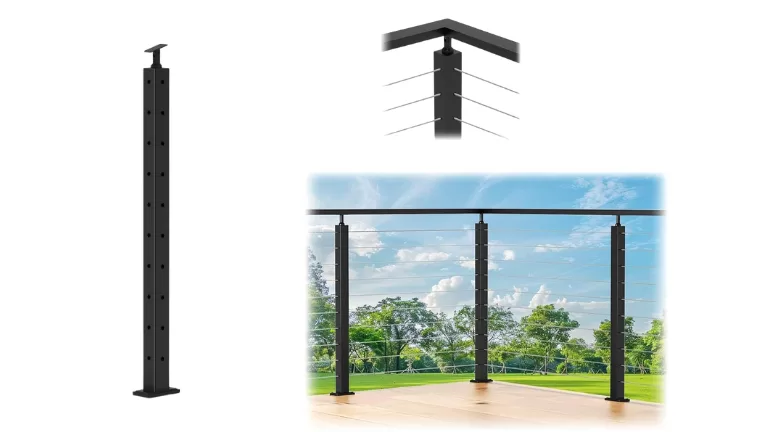
Raw Materials for Black Aluminum Cable Railing
1. 6061-T6
- Main Composition: Al-Mg-Si alloy, containing 0.8-1.2% magnesium, 0.4-0.8% silicon, with small amounts of copper, chromium, etc.
- Features:
- High strength (yield strength ≥ 240 MPa, tensile strength ≥ 265 MPa)
- Excellent corrosion resistance and oxidation resistance
- Good weldability and machinability
- Superior mechanical properties after heat treatment
- Applications: Commonly used for structural and load-bearing components, such as load-bearing railings, platform frames, stair handrails, and industrial profiles.
- Main Composition: Al-Mg-Si alloy, containing 0.45-0.9% magnesium, 0.2-0.6% silicon.
- Features:
- Smooth and attractive surface, good corrosion resistance, easy to polish and coat
- Excellent extrudability and high formability
- Moderate strength (T5 state: tensile strength ≥ 160 MPa, yield strength ≥ 110 MPa; slightly higher in T6 state)
- Easily extruded into complex cross-sectional shapes
- Applications: Widely used for architectural profiles, landscape railings, balcony railings, window and door frames, curtain walls, decorative parts, and more.

Surface Finishes for Black Aluminum Cable Railing
 This treatment involves applying a dry powder to the aluminum surface and then curing it under high heat. The result is a smooth, uniform, and attractive matte or glossy black finish that provides excellent resistance to UV rays, abrasion, moisture, and corrosion. Powder coating is one of the most popular choices for exterior railing systems due to its long-lasting color retention and minimal maintenance requirements.
This treatment involves applying a dry powder to the aluminum surface and then curing it under high heat. The result is a smooth, uniform, and attractive matte or glossy black finish that provides excellent resistance to UV rays, abrasion, moisture, and corrosion. Powder coating is one of the most popular choices for exterior railing systems due to its long-lasting color retention and minimal maintenance requirements.
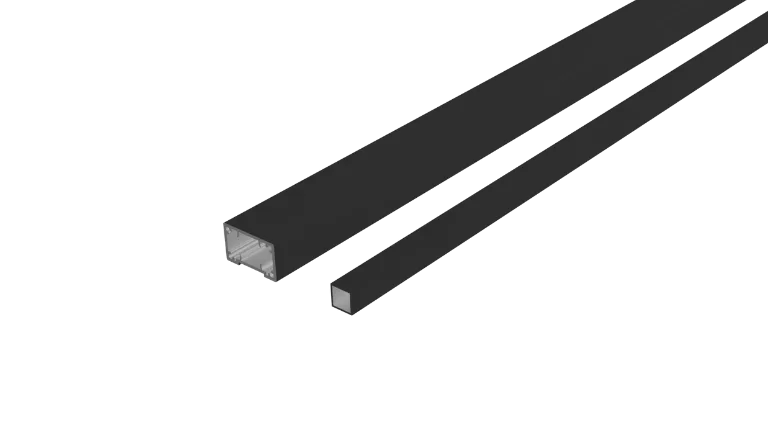 Anodizing is an electrochemical process that thickens the natural oxide layer on the aluminum surface. While traditional anodizing typically produces metallic shades, special techniques can create a black anodized finish. This enhances corrosion resistance and wear resistance, while also providing a modern and sophisticated appearance.
Anodizing is an electrochemical process that thickens the natural oxide layer on the aluminum surface. While traditional anodizing typically produces metallic shades, special techniques can create a black anodized finish. This enhances corrosion resistance and wear resistance, while also providing a modern and sophisticated appearance.
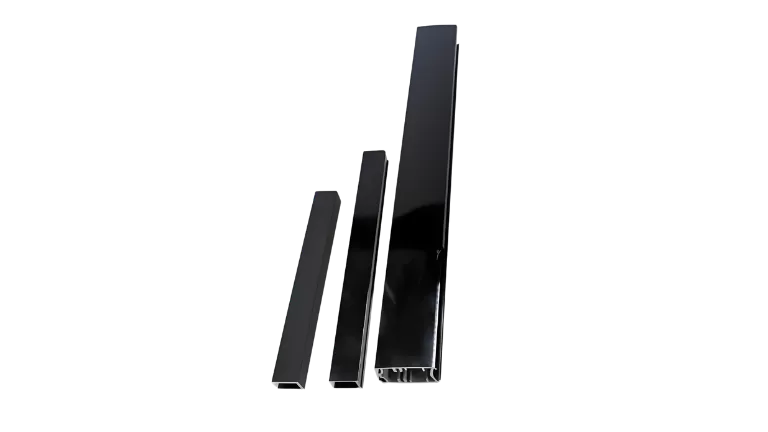 Sometimes used as an additional protective layer following anodizing or powder coating, electrophoresis further improves the railing’s resistance to corrosion and weathering. It also enhances the surface’s smoothness and color consistency.
Sometimes used as an additional protective layer following anodizing or powder coating, electrophoresis further improves the railing’s resistance to corrosion and weathering. It also enhances the surface’s smoothness and color consistency.
Structure and Accessories of Black Cable Railing
Black Aluminum Cable Railing combines durability, aesthetics, and easy installation. The system mainly includes:
Aluminum Posts
Made from strong alloys (such as 6061-T6 or 6063-T6) and powder-coated black for durability and a modern look. Posts are available for surface or side mounting.Top Rail and Bottom Rail
Horizontal aluminum rails add strength and complete the framework, with finishes matching the posts.Stainless Steel Cables
High-grade stainless steel cables (304 or 316) are tensioned between the posts for safety and an open view.Cable Tensioners and Fittings
Tensioners, end fittings, and turnbuckles keep cables tight and enhance the railing’s structural stability.Brackets and Mounting Bases
Connect rails to posts and anchor posts to surfaces, all with matching black finishes for a unified appearance.End Caps and Decorative Covers
Cover open ends of posts and rails for a neat finish and extra protection.Optional Accessories
Handrails, LED lights, or custom connectors can be added as needed for various designs or safety requirements.
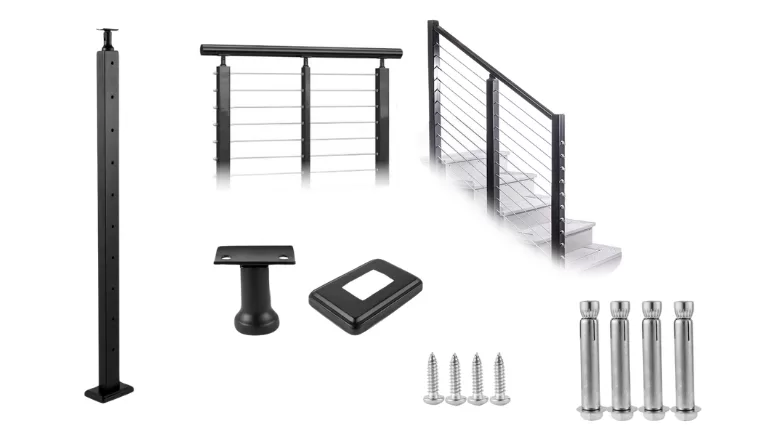
Our Factory
Our factory is equipped with 40 extrusion production lines to efficiently manufacture aluminum profile. We have one anodizing and electrophoresis line, along with two vertical spraying machines and two horizontal spraying machines for surface treatment. Additionally, we operate two sandblasting machines and six wood grain transfer printing lines, enabling us to provide various aesthetic finishes. To support our production, we also have furnaces for casting aluminum bars, aging furnaces, annealing furnaces, water cooling treatment equipment, and machining equipment, ensuring comprehensive capabilities for high-quality output.
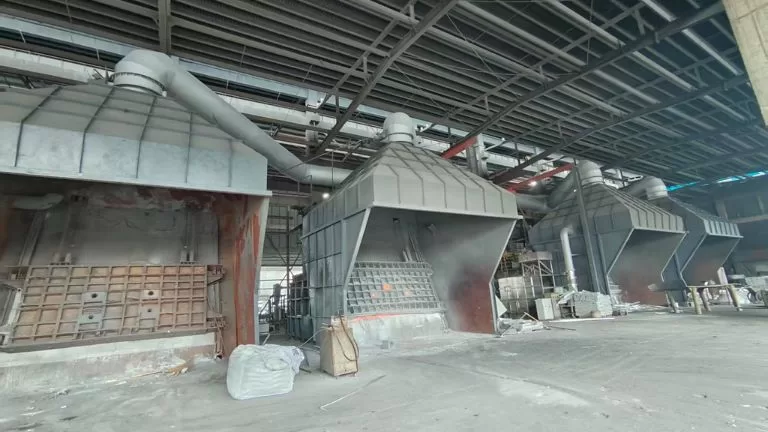
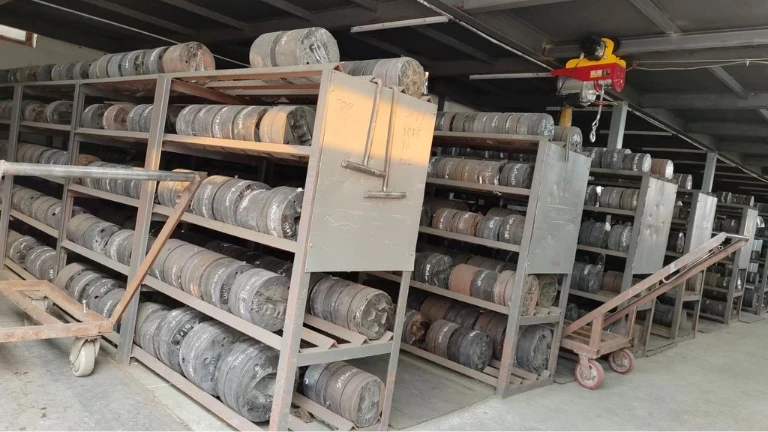

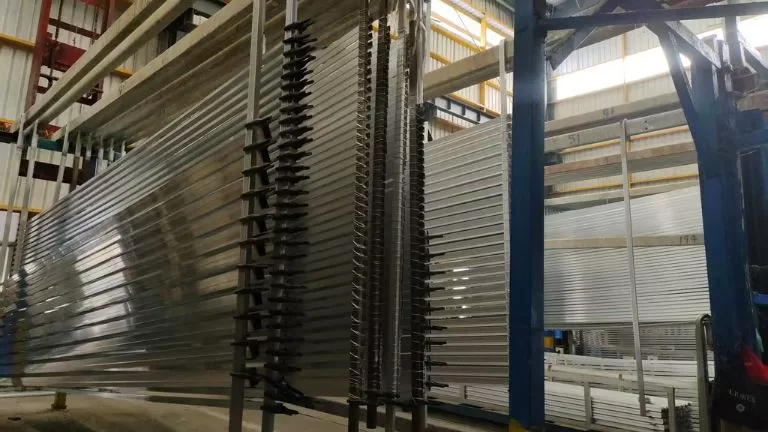
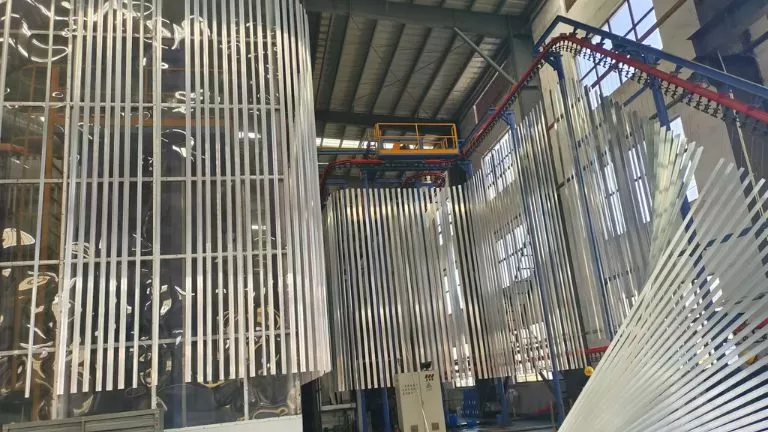
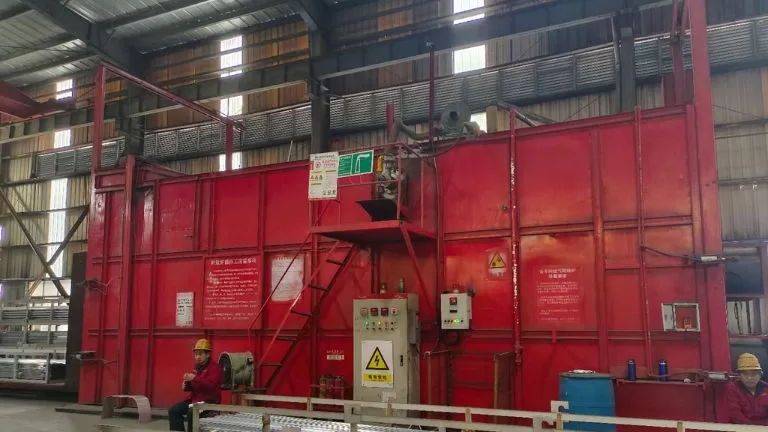

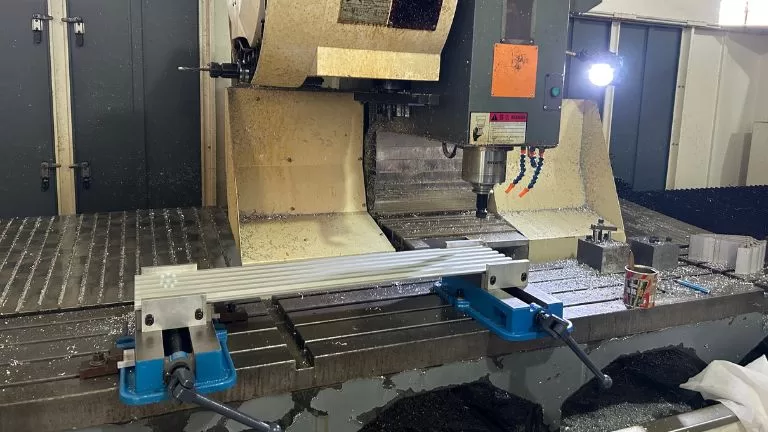
RFQ of Black Aluminum Cable Railing
1. Measuring and Positioning:
Mark the post locations according to the design drawings. Ensure the level deviation is no more than 1/8 inch per 10 feet.
2. Post Installation:
Secure the aluminum posts using expansion bolts for concrete surfaces or embedded fasteners for wood bases. Check and adjust for vertical alignment.
3. Cable Threading:
Start threading the stainless steel cables through the posts from one end. Gradually tighten each cable with tensioners (recommended initial tension: 150–200 lbs), making sure the tension is consistent across all cables.
4. End Securing:
Lock the end of each cable with clamps, trim any excess cable, and fit end caps or decorative covers to conceal the hardware.
Routine Cleaning:
Wipe down the frame and cables annually with a soft cloth and a mild detergent to remove dust and stains.Regular Inspections:
Every two years, check the cable tension (using a tension gauge, within ±10% of the standard value) and the tightness of post fasteners. Adjust or replace any worn components as needed.Post-Extreme Weather Checks:
After events like typhoons or heavy rain, inspect the frame for deformation and the cables for signs of corrosion. In coastal areas, a comprehensive inspection is recommended at least once a year.
. Anodizing (Oxidation)
- Common Colors:
Natural silver
Black
Champagne
Light bronze
Dark bronze
Gold
2. Electrophoresis Coating (E-Coating)
- Common Colors:
Black
Champagne
Light bronze
Dark bronze
Custom metallic colors
3. Powder Coating
- Colors:
Can match any color based on the RAL color chart.
Offers textures like matte, gloss, satin, and custom finishes.
4. PVDF Coating (Polyvinylidene Fluoride)
- Colors:
Also customizable using the RAL color chart.
High-end finishes with matte or glossy effects.
5. Wood Grain Transfer Printing
- Colors and Patterns:
Mimics various wood types (e.g., oak, walnut, teak, mahogany).
Custom patterns available based on provided samples.
6. Film Lamination
- Colors and Patterns:
Includes textures like marble, leather, and solid colors.
Custom finishes and patterns based on provided samples.
Pre-Treatment Options (Impact on Final Color)
- Brushing/Polishing: Produces smooth or reflective metallic surfaces.
- Sandblasting: Adds a rough, matte texture before the final surface treatment.
We provide a wide range of machining services for aluminum extrusions to meet specific requirements. These include cutting off/section removal, slotting, drilling holes, tapping threads, bending, and localized stamping to create deformations. For example, we can trim extruded profiles to custom lengths, mill precise grooves, create threaded holes for fasteners, bend profiles into specific shapes, or apply localized stamping to achieve custom forms or deformation.
In addition to these processes, we also offer TIG/MIG welding to join aluminum components for a solid structure. Furthermore, our services include assembly of common accessories, such as brackets, corner connectors, screws, hinges, end caps, and rubber seals, providing complete and ready-to-install profile solutions tailored to your project needs. This ensures that we can handle everything from simple cuts to highly customized fabrication and assembly, all with precision and efficiency.
For custom aluminum extrusion projects, we accept a variety of drawing formats, including CAD files, STEP files, and PDF files. However, for extrusions that require additional machining processes, it’s recommended to provide STEP files, as they ensure precise 3D modeling for machining accuracy.
While PDF files are acceptable, converting them into CAD drawings may result in the loss of certain details, requiring us to manually redraw the design, which could increase lead time. For the fastest and most accurate quotation, we recommend providing CAD files (e.g., DWG/DXF) and STEP files to ensure efficient design evaluation and pricing.
Mold fees are an essential part of the custom aluminum extrusion process. Since every order requires a uniquely designed mold tailored to specific requirements, these molds cannot be used for other products. Therefore, the mold fee is necessary and non-negotiable.
We require 100% upfront payment of the mold fee before mold development begins to ensure timely production. However, as a token of appreciation for your support, we offer a refund of the mold fee or equivalent discounts once the order reaches a certain production volume. Specific policies can be discussed based on your order volume and collaboration details.
Our minimum order quantity (MOQ) varies depending on the size of the product. For smaller-sized products, the MOQ is typically 500kg, while for larger-sized products, it is 2 tons.
We will specify the exact MOQ requirements during the quotation process. If your order quantity does not meet the MOQ, we can still arrange production, but an additional fee will be applied to cover mold preheating and production setup time. Rest assured, this extra fee will be reasonable, and we aim to keep it as minimal as possible to ensure smooth cooperation.
Packaging can be customized according to your needs. Options include using protective film or paper to separate and protect the surface, or foam film for additional surface protection. Products can be palletized or packed into cartons, and the quantity per pallet or carton can be specified by the customer.
The standard packaging involves bundling several pieces together with plastic wrap and then securing them onto pallets. Any packaging requirements beyond the standard will be accommodated, and the associated costs will be clearly provided to the customer.
Mold production typically takes 7 days. After the sample is confirmed, producing a full container load of 26 tons generally requires 14 days for extrusion alone. If surface treatment is required, an additional 3 days will be needed. For machining, extra time will be required depending on the complexity and volume of the machining work. The exact additional time for machining will be determined based on the specific processing requirements.
Aluminum profiles are naturally corrosion-resistant due to the formation of a thin, protective oxide layer when exposed to air or water. This oxide layer is stable and self-repairing, meaning that even if the surface is scratched or cut (such as at exposed ends or during processing), the aluminum will not rust or corrode like iron or steel. Instead, the exposed areas will quickly form a new oxide layer, providing continuous protection against further oxidation.
With proper design, installation, and maintenance, aluminum profiles can last for decades, even in challenging environments. For example, untreated aluminum can easily withstand 20-30 years in outdoor applications, while profiles with surface treatments like anodizing or powder coating can last even longer, often exceeding 50 years. This makes aluminum an excellent choice for applications where durability and long-term performance are essential.
The price of aluminum profiles consists of several components: raw material costs, extrusion processing fees, surface treatment fees, machining costs, and additional packaging fees. Among these, the cost of aluminum as a raw material tends to fluctuate frequently, while other fees remain relatively stable. Due to these fluctuations, our quotations are typically valid for 7 days.
Pricing can be structured in different ways depending on the product and requirements. It can be calculated by weight (e.g., cost per ton), by length (e.g., cost per meter), or by piece (e.g., cost per unit). For products involving extensive machining, such as heat sinks, pricing is generally calculated on a per-piece basis to accurately reflect the additional processing costs. This flexible pricing approach ensures the quote is tailored to the specific needs of the customer.
We can manufacture aluminum profiles in compliance with technical requirements that meet European standards (EN), American standards (ASTM/AA), or other standards as specified by the customer. Custom production is tailored to ensure that the profiles meet the specific standard requirements requested.
Our production equipment is designed for the metric system. If the drawings provided are in the imperial system, we will convert them into metric units for production to ensure accuracy.
It is important to note that while we can machine imperial-threaded holes for fasteners, if you require us to supply matching imperial fasteners, they may not always be available in stock. Custom orders for imperial fasteners typically require a large volume for production. Please consider this when planning your project.
